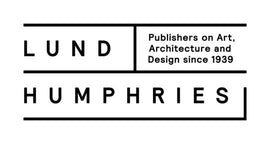Writing ‘The Architecture of Peter Rich: Conversations with Africa’ - by Jonathan Noble
In anticipation of the publication of The Architecture of Peter Rich: Conversations with Africa in October this year, author Jonathan Noble reflects on the remarkable journey that led to the completion of this wonderful book.
With unprecedented access to Peter Rich and his working practice – including in-depth interviews, numerous site visits, and informal discussions – Noble’s narrative provides an unrivalled insight into the work of Peter Rich and his place in contemporary South African architecture.
The invitation from Val Rose in November 2015 to contribute to Lund Humphries' new architecture and design series came at an apt moment. As it happened, during my sabbatical year I had been working on a proposal for a monograph on The Architecture of Peter Rich. I had met Val prior, when my first book, African Identity in Post-Apartheid Architecture: white skin, black masks, which considers challenging questions pertinent to the early post-Apartheid period, was published by Ashgate in 2011. I wanted to continue with my research interest, regarding an imaginative architecture that might blend African with modern and contemporary influences, and this is what Peter Rich achieves.

The Alexandra Heritage Centre, by Rich (2002–18), located in the vicinity of Mandela’s Yard, bridges the intersection of Richard Baloyi Street and Seventh Avenue.
Pictured: View approaching along 7th Avenue, Alexandra Heritage Centre.
South Africa has some fine architecture, yet sadly little has been published in book form. I chose to write on the work of Peter Rich because, although there are other worthy candidates, his work stands out due to its truly unique and unusual character. It is an architecture that connects the ordinary with the imaginative and mythical qualities of life. Rich taught me in 1987 - my second year of architectural studies at Wits University in Johannesburg - and I worked for some time at Rich's practice that same year, an experience that provided valuable insights into the working life of his practice.
From a research perspective, it's important to note that few public archives are available for documenting South African design. The fact that Rich was in his seventies suggested that the time was ripe for interviews that might aid a careful and considered reading of his work. The Architecture of Peter Rich is informed by some 40 hours of recorded interviews with Rich and others involved in the building processes. In writing the book, I hoped to look deep into the intended and sometimes circumstantial aspects that inform the making of architecture - this was in part, my way to honour Rich’s philosophy that architectural solutions should evolve from circumstance.

My research began with visits to the home of Peter Rich and an in depth study of his digital archive. Then came the difficult questions as to which projects to include, which drawings and sketches to select, and a consideration of the visual sequences that might inform the text. The Rich archive contains historic photographs of his buildings, but in most cases these images were of inadequate resolution and I wanted to acquire entirely new, original photographs for the book.
During a memorable visit to Mapungubwe in 2016, I was introduced to Barry Goldman – ‘The Wizard’ – who concurrently agreed to do the photography for the book. A series of photographic excursions ensued, and I felt it was necessary to be present to join the creative conversation regarding the right angle on the right shot, which was crucial for the logic of my narrative. The photography was time consuming, at times frustrating, but always spirited and rewarding.

As the writing got underway, it became clear that further drawings were required: sometimes where originals had been damaged, but also to illustrate certain architectural themes. Rich generously made new and original drawings for the book. I also made my own analytical drawings that helped to locate the decisive aspects of composition and structure, facilitating understanding.
It was important to experience the architecture, taking time to wander, to observe, to sketch and jot down those sudden surges of imagination, and to look for the captivating moments that might illuminate the narrative. It was a remarkable five year long journey, in which I learnt and grew as an author, and I am grateful for the opportunity to share this book.
--Jonathan Noble 2020
Jonathan Noble's ‘The Architecture of Peter Rich: Conversations with Africa’ is available to order HERE.
Hardcover • 184 Pages • Size: 250 × 190 mm
100 B&W illustrations and 45 colour illustrations
ISBN: 9781848222571 • Publication: October 21, 2020
You might also enjoy reading THIS or THIS



